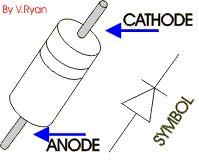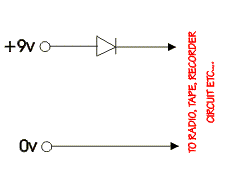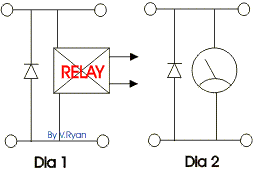|
THE DIODE V. Ryan © 2002-2022 |
|
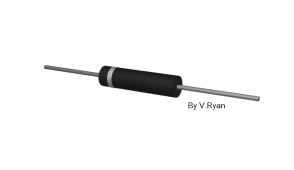 |
|
| PDF FILE - CLICK HERE FOR PRINTABLE EXERCISE BASED ON WORK BELOW | |
| CLICK HERE FOR POWERPOINT VERSION OF WORKSHEET | |
|
A diode allows electricity to flow in one direction only and blocks the flow in the opposite direction. They may be regarded as one-way valves and they are used in various circuits, usually as a form of protection. There are different types of diode but their basic functions are the same. These are noted below along with examples of diodes in use. |
|
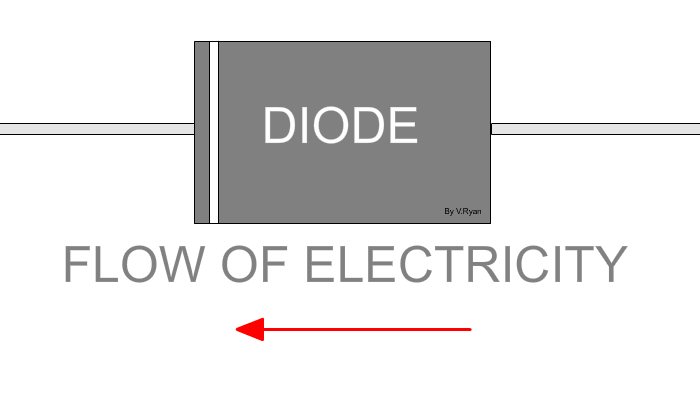 |
|
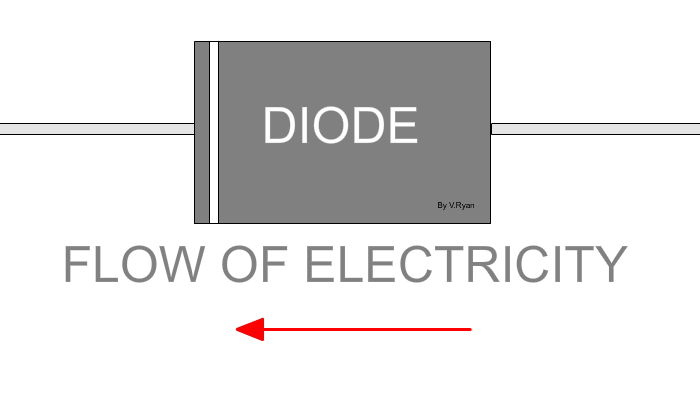 |
|
|
|
The most common type of diode is a ‘silicon diode.’ It is
enclosed in a glass cylinder with the dark band marking the cathode
terminal. This line points towards the positive of a circuit. The opposite
terminal is called the anode. |
|
TYPICAL USES OF DIODES |
|
|
REVERSE POLARITY PROTECTOR |
|
|
|
The diode in this circuit protects a radio or a recorder etc... In the event that the battery or power source is connected the wrong way round, the diode does not allow current to flow. Electronic devices can be damaged or even destroyed if the polarity is reversed (positive and negative are connected to the wrong terminals). |
|
TRANSIENT PROTECTOR |
|
|
|
When an ‘inductor’ device such as a relay is turned off a
high voltage can be generated for a short time (Dia 1). This voltage ‘spike’
can damage the relay and other components. However, the diode does not allow
current to pass through it in the wrong direction and short circuits this
spike. |
|
ZENER DIODES |
|
|
Normally a current does not flow through a diode in the reverse direction. The Zener Diode is specifically designed to begin conducting in the opposite direction when the reverse voltage reaches a voltage threshold. Zener diodes are sometimes used as a voltage sensitive switch. |
|
| Can you think of any other devices that may benefit from the use of diodes ? What about solenoids ? | |
|
|
